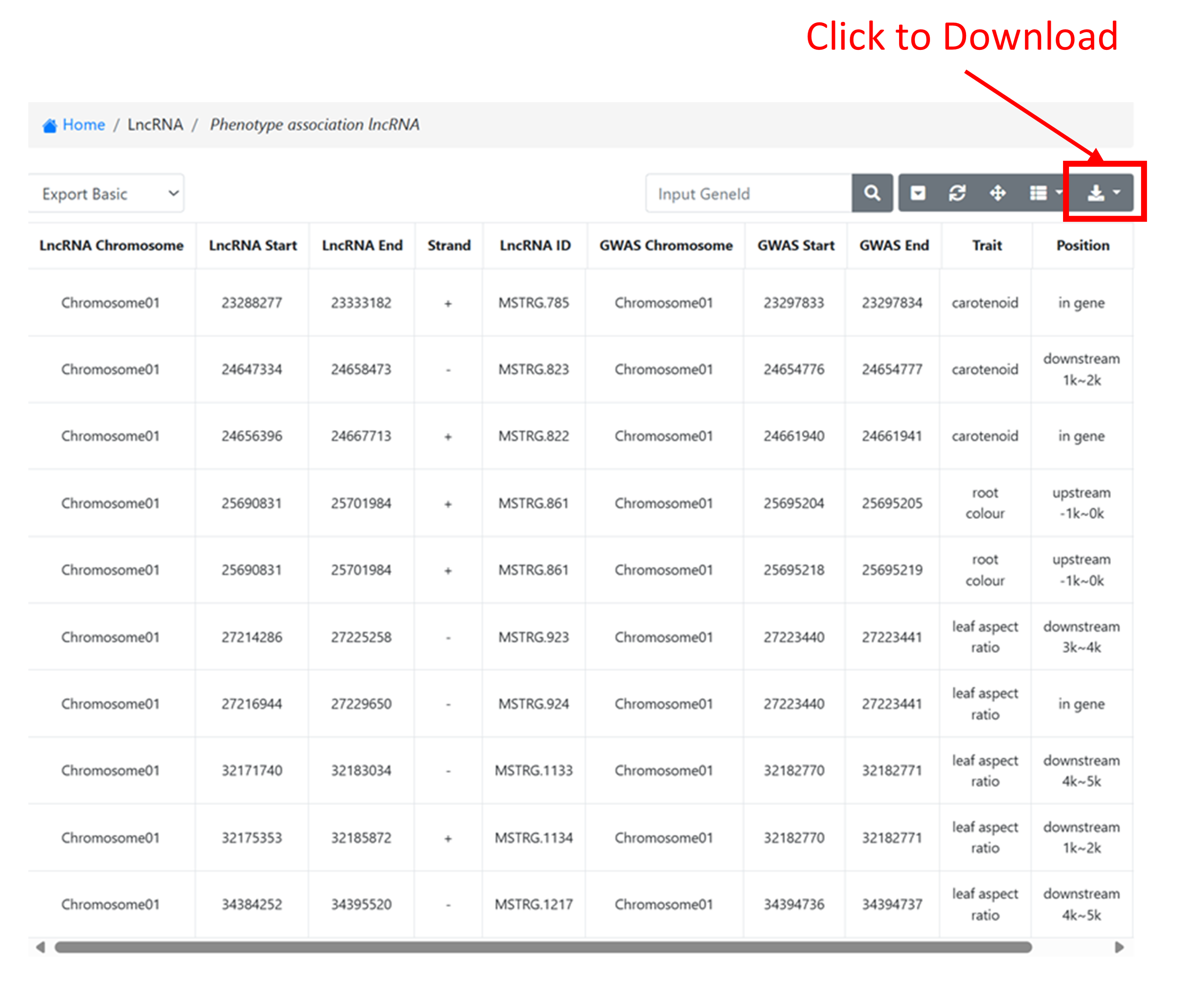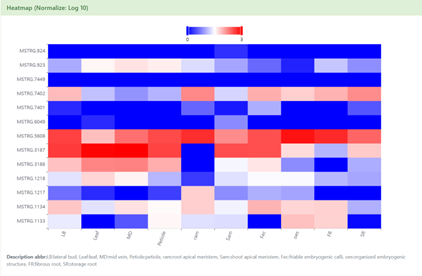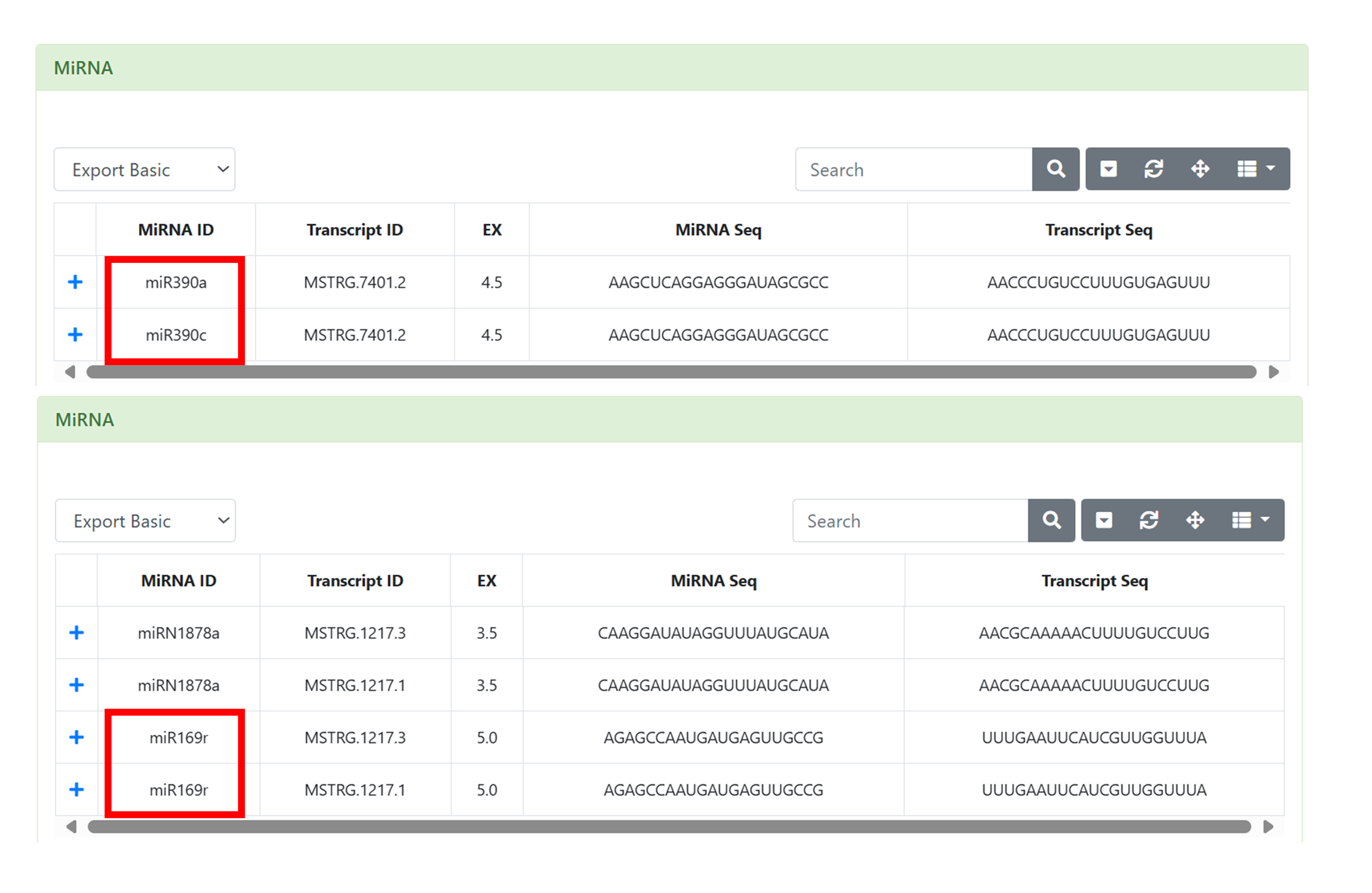Case Study
EupDB V2.0 provides tools for mining genetic information of Euphorbiaceae species and applying it to breeding. Below is an example demonstrating how EupDB V2.0 can be used to mine genetic information and apply it to breeding, with a focus on the discovery of lncRNA genes associated with leaf traits.
Step 1: After entering the phenotype and lncRNA association page(Fig. 1), users can download the GWAS and lncRNA association data and filter the entries related to leaf traits, ultimately identifying all lncRNA genes potentially associated with leaf characteristics. The filtered results include the following genes: MSTRG.1133, MSTRG.1134, MSTRG.1217, MSTRG.1218, MSTRG.3186, MSTRG.3187, MSTRG.5608, MSTRG.6049, MSTRG.7401, MSTRG.7402, MSTRG.7449, MSTRG.923, MSTRG.924.

Fig. 1: phenotype and lncRNA association page
Step 2: Using the expression profile module, users can input the aforementioned lncRNA genes to examine their expression under different conditions, allowing for the identification of lncRNA genes associated with specific phenotypes or biological processes(Fig. 2).

Fig. 2: Expression patterns of candidate genes
Step 3: By viewing the detailed information of lncRNAs, MSTRG.1217 and MSTRG.7401 are predicted to potentially interact with miR390 and miR169, respectively—both of which have been previously reported to be associated with leaf traits.(Xu et al., 2022; Yu et al., 2019).

Fig. 3: Candidate genes MiRNA information
Step 4: Check the lncRNA gene detail page to see whether it is associated with any SSR markers.

Fig. 4: Candidate genes SSR Marker information
MSTRG.7401 is co-located with an SSR marker, suggesting its potential value in breeding applications. Due to their high polymorphism and stability, SSR markers are widely used in marker-assisted selection (MAS). This lncRNA may be involved in leaf trait formation by regulating genes related to leaf development. Its co-localization with an SSR marker provides a molecular basis for its application in leaf trait improvement. In the future, this SSR marker could be developed into a stable and efficient breeding tool for selecting germplasm with favorable leaf traits, thereby improving breeding efficiency.
Reference:
XU Z, LIU Q, CHEN Y, et al. miR390 family of Cymbidium goeringii is involved in the development of reproductive organs in transgenic Arabidopsis [J]. BMC Plant Biology, 2022, 22(1): 149.
YU Y, NI Z, WANG Y, et al. Overexpression of soybean miR169c confers increased drought stress sensitivity in transgenic Arabidopsis thaliana [J]. Plant Science, 2019, 285: 68-78.